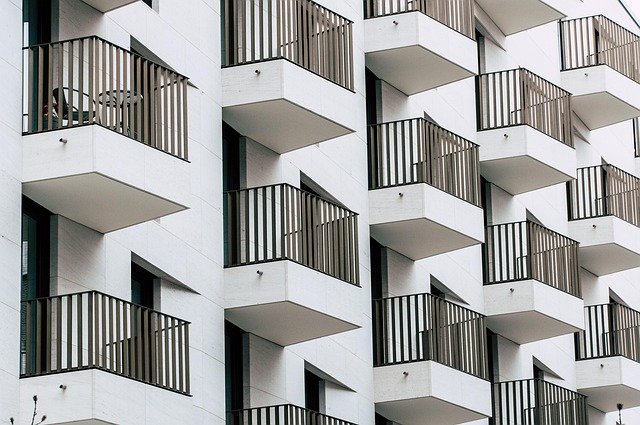Evaluating high-rise living: energy, maintenance and long-term costs
High-rise apartments in Dubai offer distinctive benefits and trade-offs for renters and those planning relocation. Evaluating energy use, ongoing maintenance and long-term costs helps households and tenants plan budgets, understand tenancy obligations, and anticipate documentation and inspection needs before committing to leases or rentals.

High-rise apartments in Dubai can simplify city living but bring specific ongoing costs and operational considerations. Energy use from air-conditioning, building service charges, and periodic maintenance all add to the monthly outlay beyond base rent. Prospective tenants and those planning relocation should review tenancy contracts, inspection reports and required documentation carefully, and factor in transport, connectivity and any furnishing or pet-related fees when budgeting for long-term residency.
How do rentals, leases and tenancy affect budgeting?
When comparing rentals and leases in Dubai, examine the lease length, security deposit and agent fees. Many landlords require a security deposit and a post-dated cheque or online payment for rent; agents commonly charge a commission. Tenancy contracts often list responsibilities for minor repairs, inspection schedules and documentation required at move-in and move-out. These obligations can shift short-term costs to tenants, so include expected repair allowances and potential lease renewal increases when creating a realistic budget.
What are energy and utilities considerations in a highrise?
Highrise apartments tend to have higher cooling demands, especially in Dubai’s climate. Utilities—electricity and water accounts handled through DEWA—are affected by AC runtime, number of occupants and appliance efficiency. Some developments include chilled-water central cooling charges in their service invoices; others bill individually. Understanding how utilities are metered and charged will help estimate monthly costs. Consider energy-efficient appliances, smart thermostats and insulation improvements where permitted to reduce bills over time.
How does maintenance impact long-term costs?
Maintenance in highrise buildings includes both unit-level and common-area expenses. Service charges cover elevators, security, landscaping, pool upkeep and facade maintenance; these are often charged per square foot and can vary widely between developments. Tenants should inspect the property for wear, request recent inspection reports, and clarify which maintenance tasks the landlord covers. Regular preventative maintenance—HVAC servicing, window seals and plumbing checks—reduces the risk of larger, unexpected expenses later in tenancy.
How should relocation, furnishing and pets be planned financially?
Relocation costs include moving services, interim storage and any housing overlap when leases change. Furnishing a highrise flat ranges from minimal setup to full turnkey solutions; many residents choose rental furniture to spread one-off costs. Pet policies vary by building: some highrises allow pets with deposits or additional cleaning fees, while others prohibit them. Factor in pet-related costs—registration, grooming and potential pet deposits—plus one-time furnishing and setup when preparing a relocation budget.
How do commute, transport and connectivity influence daily costs?
Location affects transport expenses: living close to major employment hubs can reduce commute time and transport costs but may command higher rent. Highrise apartments often cite proximity to metro stations, bus routes and ride-share options; evaluate typical commute times to work to estimate monthly transport spending. Connectivity—reliable internet and mobile coverage—is essential for remote work or streaming; installation or package fees from local ISPs and occasional upgrade costs should be included in financial planning.
Real-world cost insights and comparison for highrise living
Estimating real-world costs helps set expectations for rentals, utilities, maintenance and one-off relocation fees. Below are representative providers and typical cost ranges encountered by renters in Dubai. These figures are general benchmarks intended to illustrate typical expenses; actual amounts will vary by location, apartment size, building specification and personal use patterns.
| Product/Service | Provider | Cost Estimation |
|---|---|---|
| 1-bedroom rental (central Dubai) | Listings via Bayut / Property Finder | AED 70,000–120,000 / year |
| Service charges (building maintenance) | Developers such as Emaar, Nakheel | AED 8–18 / sq ft / year (varies) |
| Utilities (electricity & water) | DEWA | AED 300–900 / month (depending on AC use) |
| Short-term furnishing and move-in cleaning | Justmop / local movers | AED 1,000–5,000 one-off |
| Annual AC servicing | Local HVAC contractors | AED 300–1,200 / year |
| Tenancy documentation and agent fee | Local real estate agents | ~5% of annual rent + admin fees (AED 1,000–3,000) |
Prices, rates, or cost estimates mentioned in this article are based on the latest available information but may change over time. Independent research is advised before making financial decisions.
Conclusion Highrise living in Dubai bundles conveniences with predictable and variable costs: steady rent or lease payments plus utilities, maintenance and occasional one-off charges for relocation and furnishing. Careful review of tenancy documentation, thorough inspection before move-in, and a clear understanding of who covers which maintenance tasks will reduce surprises. Building a budget that includes service charges, DEWA estimates, transport and connectivity fees helps households and tenants make informed choices about long-term affordability and lifestyle fit.






